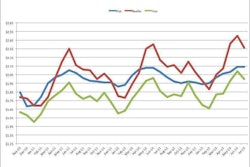On a recent morning commute on the interstate, I was traveling in the far right lane and reached the top of a hill, where the road then turns to the right for a downhill run. At the top of the curving crest, I was greeted without warning with the sight of a state trooper – lights flashing – parked behind a tractor-trailer on the right side of the road. Both vehicles had been hidden by the natural terrain and weren’t visible until I was practically next to them.
They’d parked at that perfect spot where they couldn’t be seen until the last possible second. Knowing full well that our state has a pull-over law where approaching traffic must yield a full lane for a law enforcement vehicle, I immediately jerked the wheel to provide space for the truck and trooper, who I noticed was standing on the truck’s steps talking to the truck driver.
After this brief moment passed, I started thinking about the situation. If this wasn’t a breakdown – and it didn’t appear to be – then why pull a truck over in an area with such poor visibility? Not only was this hazardous for approaching traffic, it was also dangerous for the trucker and trooper – after all, not every car in front of or behind me was obeying the pull-over law and was coming pretty darn close to both stopped vehicles.
In addition, consider how unsafe the truck’s return to the highway would be – the driver really didn’t have a good line of sight to determine if he would have enough time to re-enter the roadway before another car whizzing along at 70 mph would be underneath his trailer.
You’d think that considering the size of trucks and the speeding cars nearby, troopers might consider allowing big rigs to continue along until they reach a highly visible spot where a pullover will be safe for everyone – including themselves.










